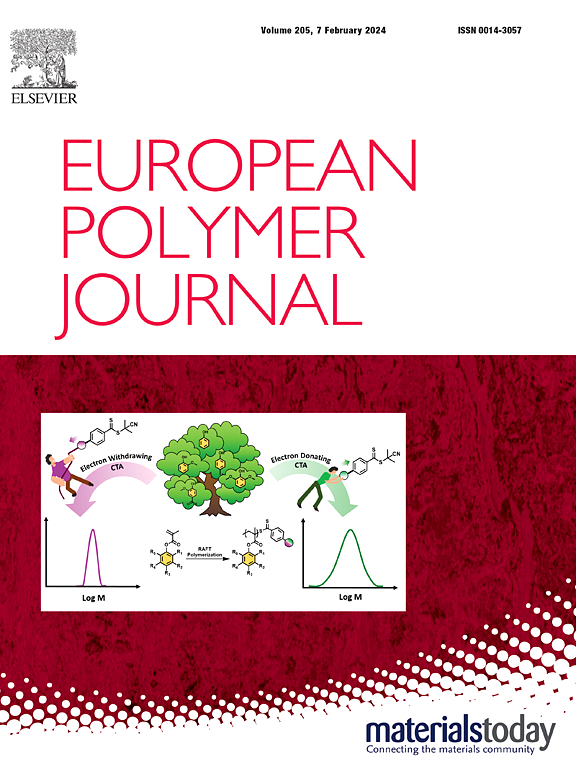Polyolefin based Nano-Objects via ARGET ATRP mediated Polymerization-Induced Self-Assembly process
IF 5.8
2区 化学
Q1 POLYMER SCIENCE
引用次数: 0
Abstract
Polyolefins (POs) are key materials in industrial applications, and the development of high-performance and high-value-added POs is always a significant and challenging research focus. The major challenge lies in addressing compatibility between non-polar POs and polar functional components. We herein reported a facile strategy to prepare PO-based nano-objects using an activator regenerated by electron transfer atom transfer radical polymerization mediated polymerization-induced self-assembly (ARGET ATRP PISA) process based on hydrogenated polyisoprene-b-poly (glycidyl methacrylate) (HPI-b-PGMA)/poly (glycidyl methacrylate) (PGMA) blends. The dynamic light scattering (DLS) and transmission electron microscopy (TEM) revealed effective control over a wide range of hydrodynamic diameters of stabilized spherical nano-objects. The thermogravimetric analysis (TGA) and microscale combustion calorimetry (MCC) demonstrated the efficient and controllable introduction of phosphoric acid (H3PO4) into nano-objects, with POs serving as the shell and flame retardants forming the core. This work was hoped to provide a versatile route to PO-based nano-objects and open a novel avenue for designing PO-based additives.

求助全文
约1分钟内获得全文
求助全文
来源期刊

European Polymer Journal
化学-高分子科学
CiteScore
9.90
自引率
10.00%
发文量
691
审稿时长
23 days
期刊介绍:
European Polymer Journal is dedicated to publishing work on fundamental and applied polymer chemistry and macromolecular materials. The journal covers all aspects of polymer synthesis, including polymerization mechanisms and chemical functional transformations, with a focus on novel polymers and the relationships between molecular structure and polymer properties. In addition, we welcome submissions on bio-based or renewable polymers, stimuli-responsive systems and polymer bio-hybrids. European Polymer Journal also publishes research on the biomedical application of polymers, including drug delivery and regenerative medicine. The main scope is covered but not limited to the following core research areas:
Polymer synthesis and functionalization
• Novel synthetic routes for polymerization, functional modification, controlled/living polymerization and precision polymers.
Stimuli-responsive polymers
• Including shape memory and self-healing polymers.
Supramolecular polymers and self-assembly
• Molecular recognition and higher order polymer structures.
Renewable and sustainable polymers
• Bio-based, biodegradable and anti-microbial polymers and polymeric bio-nanocomposites.
Polymers at interfaces and surfaces
• Chemistry and engineering of surfaces with biological relevance, including patterning, antifouling polymers and polymers for membrane applications.
Biomedical applications and nanomedicine
• Polymers for regenerative medicine, drug delivery molecular release and gene therapy
The scope of European Polymer Journal no longer includes Polymer Physics.
 求助内容:
求助内容: 应助结果提醒方式:
应助结果提醒方式:


